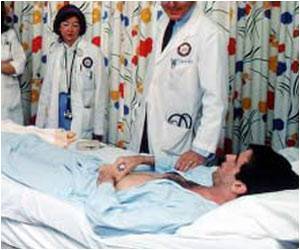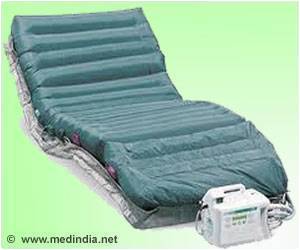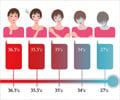There are quite a few benefits into early childhood for those who undertake treatment to reduce the body temperatures of infants who experience oxygen deficiency at birth.

"The findings show that the use of this cooling technique after birth increases the chances of survival, without increasing the risk of long-term disability," said senior author Rosemary D. Higgins, M.D., of the Pregnancy and Perinatology Branch of the Eunice Kennedy Shriver National Institute of Child Health and Human Development (NICHD).
The study was conducted by Seetha Shankaran, M.D., of Wayne State University in Detroit, Dr. Higgins, and 25 other researchers in the NICHD Neonatal Research Network. In addition to NICHD, funding was also provided by the NIH's National Center for Research Resources and the National Center for Advancing Translational Sciences.
Infants born at term may fail to get enough oxygen, from blood loss or other birth complications. Oxygen deprivation during the birth process is called hypoxic-ischemic encephalopathy, or HIE. In severe cases of HIE, death rates can reach 50 percent. Survivors often sustain brain damage, which can result in cerebral palsy, cognitive impairment, or hearing and vision loss. Even if they do not experience detectable brain damage, children who experience HIE at birth are at higher risk for learning disabilities, language delays, and memory deficits. Severe oxygen deficiency at birth is also known as birth asphyxia.
The current study was in follow up to an earlier study, conducted when the children were newborns and had received the body cooling treatment shortly after birth. That earlier study found that infants who received the cooling treatment were less likely to die or to develop moderate or severe disability than were the infants who received routine care. The original study assessed children's movement and cognitive abilities, hearing, and vision when they were 18 to 22 months old.
The study authors noted that neonatal intensive care units around the world have adopted this cooling technique to reduce the risk of death and disability among full-term infants who show signs of the brain dysfunction indicating oxygen deficiency.
Advertisement
The 208 children in the study were diagnosed with HIE within 6 hours of birth and treated in newborn intensive care units in the network. They were given the usual intensive care or treated with the body cooling technique. With this technique, cool water circulates inside a waterproof blanket beneath the infant. The cool water reduces the infant's temperature as low as 91.4 degrees Fahrenheit, and maintains it there 72 hours, after which caregivers allow the infant's body temperature to return to a normal.
Advertisement
The researchers calculated the number of deaths and cases of severe disability as a single combined outcome. In the cooling group, the combined rate was 41 percent, compared with 60 percent in the usual care group. Severe disability involved motor function, cognitive ability, and vision. Rates of cerebral palsy, blindness, and epilepsy were similar between the two groups.
"Before the advent of this cooling treatment in 2005, doctors couldn't treat HIE, and many infants died or sustained brain injury," Dr. Shankaran said. "It's reassuring to see that the benefits of this practice, which have been widely documented at 18 months or 2 years of age, are apparent as these children grow."
Source-Eurekalert











